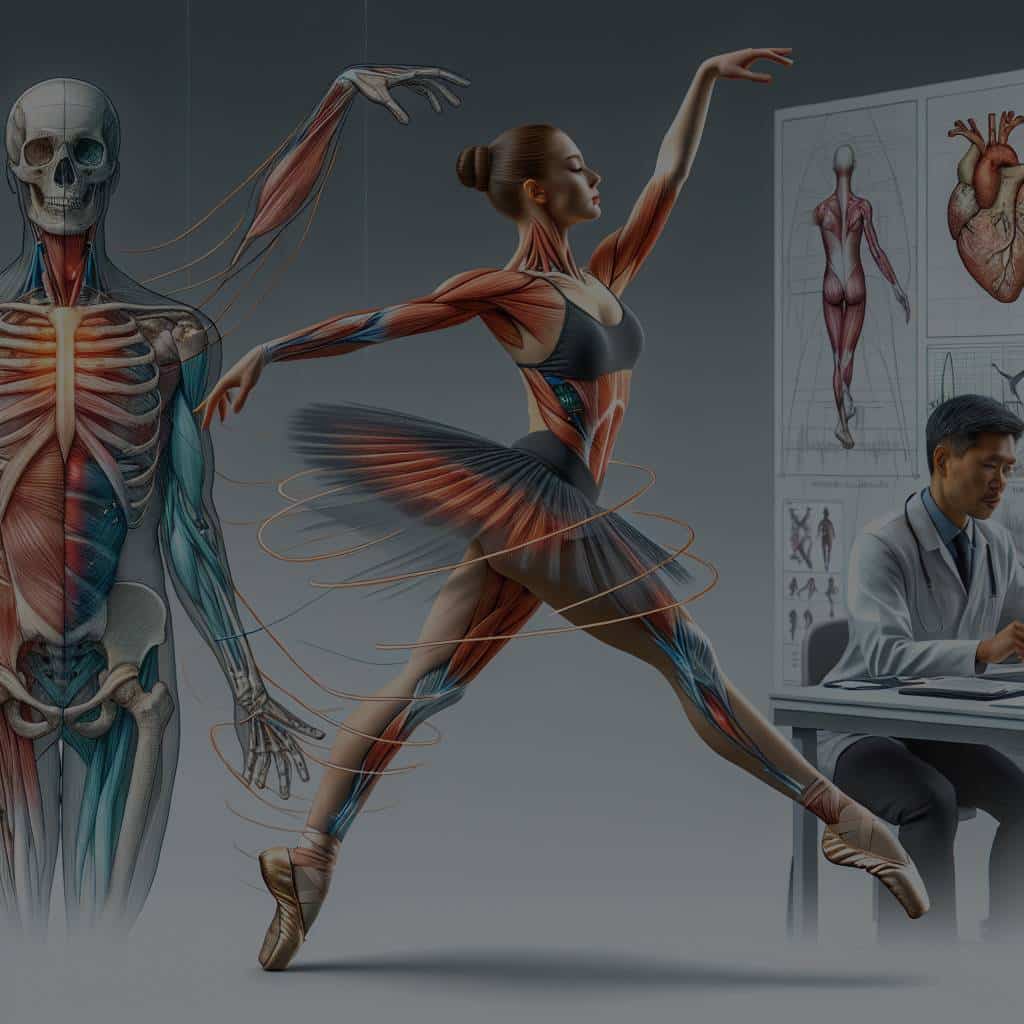How Does Biomechanical Analysis Aid in Reducing Injury Risk in Ballet?

Traditional ballet is a visually stunning embodiment of grace and strength, showcasing the human body’s remarkable potential for movement. It is a demanding discipline, requiring hours of rigorous training and the mastery of complex techniques. Yet, the aesthetic beauty of ballet often masks the harsh reality faced by dancers – the risk of injury. In recent years, biomechanical analysis has emerged as a critical tool to help mitigate this risk.
Through the lens of Google Scholar, PubMed, and crossref databases, this article will delve into how biomechanical analysis aids in reducing foot and ankle injuries in ballet dancers, thereby enhancing their performance and longevity in the field.
A lire aussi : What Are the Keys to Effective Team Communication in Doubles Badminton?
The Intersection of Ballet and Biomechanics
At first glance, ballet and biomechanics might seem like strange bedfellows. After all, the former is an art form steeped in centuries-old traditions, while the latter is a branch of physics concerned with the analysis of mechanical laws relating to the movement or structure of living organisms. Yet, the two are inextricably linked.
A dancer’s body is their instrument, and like any finely tuned machine, it is susceptible to wear and tear. The foot, particularly the pointe, and the ankle experience significant strain during ballet dancing. With the introduction of biomechanical analysis, experts can study the forces exerted on these body parts and devise strategies to minimize injury risk.
A lire aussi : How Can Breathwork Techniques Enhance Performance in High-Altitude Climbing?
The Role of Biomechanical Analysis in Injury Prevention
Biomechanical analysis involves the application of kinesiology – the scientific study of human movement – to examine the physical forces exerted by muscles and gravity on the skeletal structure. Using high-tech equipment and software, this analysis provides valuable data about a dancer’s performance, including the force of their kicks and the strain on their ankles during pointe work.
A comprehensive biomechanical analysis can identify potential areas of vulnerability in a dancer’s technique, enabling targeted training interventions to strengthen these areas and reduce injury risk. This isn’t just about preventing injuries; it’s about enabling dancers to perform at their very best.
Biomechanical Analysis: A Deep Dive into the Foot and Ankle
A ballet dancer’s feet and ankles are vital for their performance. Therefore, avoiding injury in these areas is crucial. Ballet dancers often experience foot injuries due to the excessive force applied during jumps and pointe work. Ankle injuries, meanwhile, are common due to the heightened risk of ankle sprains in ballet.
Through biomechanical analysis, scientists can study the impact of these movements on the foot and ankle, which helps them understand how these injuries occur. By understanding the root cause of these injuries, they can provide feedback to dancers and their coaches about modifications to their technique or training regimen.
The Impact of Biomechanical Analysis on Training and Performance
Incorporating biomechanical analysis into a dancer’s training regime can have transformative effects on their performance. Researchers have found that training programs influenced by biomechanical analysis results in fewer injuries and improved performance metrics among ballet dancers.
By examining the way dancers move, biomechanical analysis can guide the development of personalized training programs that address the specific needs and vulnerabilities of each dancer. This can involve fine-tuning their technique, adapting their training schedule, or introducing exercises designed to strengthen specific muscle groups.
Furthermore, biomechanical analysis can determine the most efficient way for dancers to move, thereby conserving energy and enhancing their performance. This is particularly beneficial in ballet, where dancers often perform rigorous routines that require considerable stamina.
The Future of Ballet and Biomechanics
The intersection of ballet and biomechanics is a burgeoning field of study. As more dancers and coaches recognize the benefits of biomechanical analysis, it is likely to become an integral part of ballet training regimes.
Moreover, advances in technology are making biomechanical analysis more accessible to dancers. Today, digital tools allow dancers to receive biomechanical feedback in real-time, enabling immediate adjustments to their technique.
In conclusion, biomechanical analysis is a game-changer for ballet. It provides a scientific approach to understanding the physical demands of ballet and offers practical solutions to reduce injury risk. It is an invaluable tool for nurturing the health and wellbeing of ballet dancers, ensuring they can continue to enchant audiences with their grace and talent for many years to come.
The Role of Technology in Biomechanical Analysis
Technology has revolutionized the way we analyze the biomechanics of ballet dancers. Modern software and hardware, in combination with databases like Google Scholar, CrossRef, and PubMed, have made it possible to study the intricate details of each movement made by a dancer. A ballet dancer’s every move, from the tips of their pointe shoes to the balance of their lower limbs, can be analyzed with astonishing precision.
One key aspect of biomechanical analysis is the measurement of ground reaction forces. These are the forces exerted by the ground on a body in contact with it. For a ballet dancer, these forces are experienced whenever a step is taken or a jump is landed. High-tech equipment such as force plates can measure these forces, providing valuable information about how a dancer’s foot and ankle deal with the stress of dance.
Plantar pressure, another vital metric in biomechanical analysis, is the pressure exerted on the sole of the foot. Specialised sensors are used to measure this, providing a comprehensive overview of how the foot interacts with the ground, especially when wearing pointe shoes.
The data gathered from these technologies is often complex. However, by using databases like PubMed and CrossRef to access a wealth of research articles, and powerful software to analyze the data, it becomes possible to draw meaningful insights about a dancer’s risk factors for injury.
Conclusion: Biomechanical Analysis, the Boon to Ballet Dancers
In conclusion, biomechanical analysis is a powerful tool that is redefining the approach to ballet training and performance. It provides a scientific basis to understand the physical demands of ballet and offers actionable insights to reduce the risk of injuries. By focusing on the lower extremity, particularly the foot and ankle which are pivotal in ballet, biomechanical analysis aids in identifying risk factors and improving technique.
The use of databases such as Google Scholar, CrossRef, and PubMed provide access to extensive research on sports med and biomechanics, enriching the understanding of the intricate movements involved in ballet. The advent of advanced technological tools allows real-time feedback, thereby facilitating immediate corrections to the dancers’ techniques, enhancing their performance, and reducing the risk of injuries.
Moreover, innovations in technology, particularly in data collection and analysis, have made biomechanical analysis more accessible, benefiting not just professional ballet dancers, but also those in training. By integrating biomechanical analysis into their routine, dancers can attain a greater understanding of their bodies, adapt their movements more efficiently, and ultimately extend their dancing careers.
In essence, the amalgamation of ballet, biomechanics, and technology is not just a boon, but a necessity, ensuring that the enchanting art form of ballet continues to thrive, while prioritising the health and well-being of its dancers.
